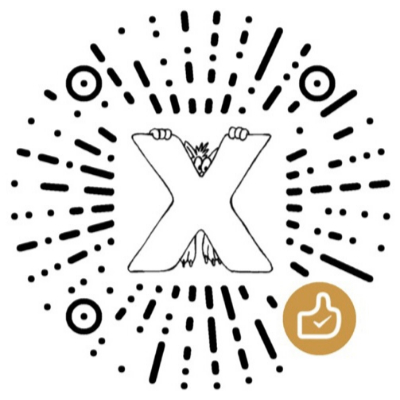Are you curious about what the letters in the MBTI personality test mean? What psychological color symbols are corresponding to? MBTI is a personality classification tool based on psychological theory, while color psychology studies how color affects people's emotions and behaviors. This article will introduce the basic theory of MBTI and the meanings represented by the 8 letters in the MBTI personality test, and combine each letter with the color symbols in color psychology to see what the psychological color corresponding to the meaning of each letter is.
MBTI theory introduction
MBTI (Myers-Briggs Type Indicator) was developed by Isabel Briggs Myers and her mother Katharine Cook Briggs based on the theory of psychologist Carl Jung. MBTI describes an individual's psychological preferences through 16 personality types, each of which consists of 4 personality dimensions. The four dimensions of MBTI correspond to 8 letters in total. The following 8 letters represent the meanings of MBTI personality type:
- Extraversion (E): It tends to gain energy from the outside world and likes to interact with others.
- Introversion (I): It tends to obtain energy from the inner world, likes to be alone or communicate with a few people.
- Sensing (S): Focus on specific facts and details, and focus on reality and practical experience.
- Intuition (N): Focus on the overall situation and the possibilities of the future, and tend to solve problems with intuitive and innovative thinking.
- Thinking (T): Inclines to make logical and rational analysis and focus on objective facts.
- Feeling (F): When making decisions, pay more attention to personal values and other people's feelings, and pay attention to interpersonal relationships and harmony.
- Judging (Judging, J): tends to organize and plan, prefer an orderly and structured environment.
- Perceived (P): Like flexibility and openness options to be more adaptable to changing environments.
If you don’t know what your MBTI type is yet, you can take the free MBTI test provided by PsycTest Quiz’s official website to find out the best personality tag for you.
Color symbols corresponding to letters of MBTI personality type
1. E (Extraversion) Extravert
Extroverts are energetic and enjoy socializing and interacting with others. They take energy from the outside world, usually active and passionate.
Corresponding color: orange
Orange symbolizes vitality, enthusiasm and sociality, echoing the energy and openness of an extroverted personality.
2. I (Introversion) Introversion
Introverts are often more introspective, prefer to be alone and get energy from their inner world. They tend to feel comfortable in a quiet environment.
Corresponding color: dark blue
The dark blue symbolizes contemplation and depth, which conforms to the introvert's qualities of quiet, introspective and thoughtfulness.
3. S (Sensing) Perceptual
Perceptual people pay attention to reality and specific details, and pay attention to practical experience. They tend to make decisions based on existing information.
Corresponding color: green
Green represents practicality, robustness and attention to detail, which is in line with the perceived personality traits that focus on reality and details.
4. N (Intuition) Intuition
Intuitive people tend to focus on future possibilities and global thinking. They love to innovate and explore new ideas.
Corresponding color: purple
Purple symbolizes creativity and imagination, and is consistent with the personality traits of the intuitionist who likes global thinking and innovation.
5. T (Thinking) Thinking
Thinking people tend to rely on logic and rational analysis when making decisions. They focus on objective facts and fairness.
Corresponding color: blue
Blue is usually associated with logic and calmness, in line with the qualities of thinkers focusing on rationality and objective analysis.
6. F (Feeling) Emotional
Emotional people pay more attention to personal values and other people's feelings when making decisions. They tend to focus on harmony and relationships.
Corresponding color: pink
Pink symbolizes warmth, care and empathy, and reflects the importance that emotional people attach to interpersonal relationships and emotions.
7. J (Judging) Judging type
Judgmental people tend to organize and plan, they prefer an orderly and structured environment, focusing on efficiency and completing tasks.
Corresponding color: brown
Brown symbolizes reliability, order and sense of responsibility, and represents a judge-oriented person's preference for structure and planning.
8. P (Perceiving) Perceptual type
Perceptual people prefer flexibility and openness options, and they tend to be at ease and adapt to changing environments.
Corresponding color: cyan
Cyan symbolizes flexibility and adaptability, and conforms to the perceptual's personality traits that prefer flexibility and openness options.
Free personality test
- MBTI Type Sixteen Personality Test : If you don’t know what your MBTI personality type is yet, you can take the free MBTI test provided by the official website of PsycTest Quiz.
- FPA personality color test : You can also try the FPA personality color test . This psychological test can give you an in-depth understanding of your strengths, weaknesses and potential development directions. This test is not only suitable for workplace relationships, but also helps you improve your interactions with family, friends and partners.
Summarize
Combining MBTI 8 letters with color psychology provides us with an interesting and intuitive way to explore and understand different personality traits. Through the symbolic meaning of color, we can not only better understand the traits of each character, but also feel the unique charm of each character. This combination of color and personality provides a new perspective for our self-knowledge and interpersonal communication.
If you are interested in the color symbols of MBTI personality types, please read 'What are the colors of MBTI 16 Personalities' . In this post, we generate individual unique colors for each MBTI type based on the color mixing of each letter mentioned above. This will help you understand the color symbols of each personality type more deeply and explore how these colors affect our perception of different MBTI types.
Hopefully this article will help you gain a deeper understanding of the MBTI personality model and its corresponding color symbols.
Link to this article: https://m.psyctest.cn/article/ROGKzdE1/
If the original article is reprinted, please indicate the author and the source in the form of this link.

